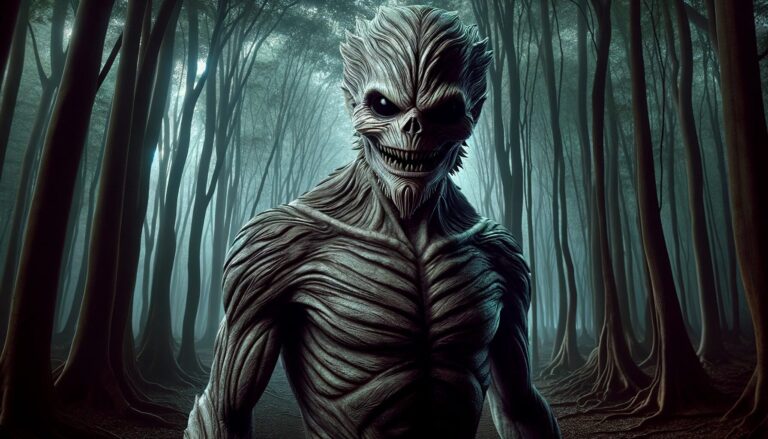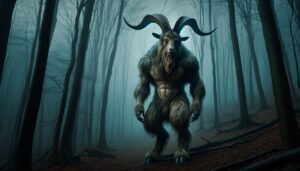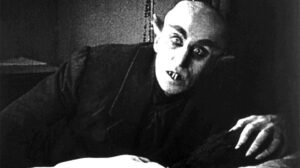Table of Contents
In various versions of the legend, El Cuco is described as a monster or ghost that preys on disobedient children, especially those who misbehave or refuse to go to sleep. Parents and caregivers may warn children that if they don’t behave, El Cuco will come to get them.
The concept of El Cuco is similar to that of the Boogeyman in English-speaking cultures—a figure used to instill fear in children and encourage obedience. The specifics of El Cuco’s appearance and behavior can vary, as folklore tends to be shaped by cultural influences and regional traditions.
Origin
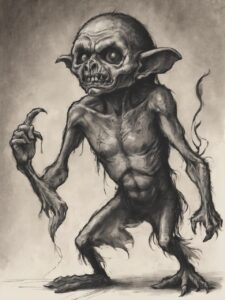
The origin of the legend of El Cuco is rooted in Hispanic and Latin American folklore, with variations found in different countries and regions. The concept of a mythical creature that frightens children into good behavior is a common theme in many cultures, and El Cuco is a specific manifestation of this archetype in the Hispanic and Latin American context.
The legend has been passed down through generations through oral tradition, with parents and caregivers using the tale as a tool to encourage obedience and discipline in children. The specifics of El Cuco’s appearance, behavior, and name may vary across different countries and communities.
It’s important to note that the origins of such folklore are often difficult to trace precisely, as they evolve organically over time through cultural exchanges, storytelling, and adaptation to local beliefs. El Cuco, like many mythical creatures, reflects cultural values and serves as a means of imparting moral lessons within the community.
Physical Description
The physical description of El Cuco can vary across different regions and communities within Hispanic and Latin American cultures, as folklore often allows for creative interpretation. In general, El Cuco is depicted as a menacing and mysterious entity, and specific details may differ in various versions of the legend. Here are some common elements associated with the physical description of El Cuco:
Shape-Shifting: El Cuco is often described as a shape-shifter, capable of taking on various forms. This ability allows the creature to adapt to different situations and terrify children in ways that resonate with their fears.
Dark and Shadowy Figure: El Cuco is frequently portrayed as a dark and shadowy figure, lurking in the corners or hiding under beds. This adds to the sense of mystery and fear associated with the creature.
Glowing Eyes: Some versions of the legend depict El Cuco as having glowing eyes that pierce through the darkness. The eyes are said to watch misbehaving children and instill a sense of dread.
Hairy or Furry Appearance: In certain renditions, El Cuco is described as having a hairy or furry appearance, contributing to its monstrous and otherworldly nature.
Long Claws or Fingers: El Cuco is sometimes said to have long claws or fingers that it uses to snatch disobedient children. This detail adds a menacing quality to the creature.
Personality
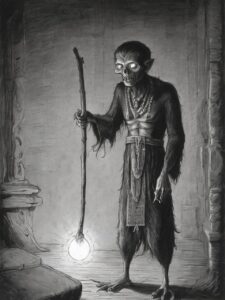
The personality of El Cuco, as depicted in Hispanic and Latin American folklore, is typically characterized by malevolence and the intent to frighten or harm disobedient or misbehaving children. Here are some common elements associated with the personality of El Cuco:
Menacing Intentions: El Cuco is often portrayed as a figure with malicious intentions, especially toward children who do not behave or refuse to go to sleep. The creature serves as a deterrent, as parents warn their children that El Cuco will come for them if they misbehave.
Stealth and Trickery: El Cuco is known for its stealth and ability to hide in the shadows. It may use trickery to approach children undetected, contributing to the fear associated with its presence.
Disciplinary Role: El Cuco plays a disciplinary role in the folklore, acting as a supernatural enforcer of good behavior. Parents and caregivers invoke the legend to encourage obedience and ensure that children follow rules and routines.
Fear-Inducing Presence: The primary purpose of El Cuco is to instill fear in children, creating a sense of dread that encourages compliance. The creature’s mysterious and menacing nature contributes to the effectiveness of the cautionary tale.
Cultural Symbol: Beyond its individual personality traits, El Cuco serves as a cultural symbol representing the importance of discipline and obedience within the community. The legend reinforces cultural values related to family, respect, and societal norms.
El Cuco are shaped by cultural traditions and storytelling practices. The legend of El Cuco is a tool used by parents and caregivers to convey moral lessons and social expectations to children in a way that resonates with their fears and imagination.
Explanation of the Myth
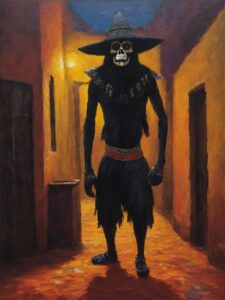
The myth of El Cuco, also known as “Coco” or “Cucuy,” is deeply rooted in Hispanic and Latin American folklore. It serves as a cautionary tale, traditionally told by parents and caregivers to encourage good behavior and discipline in children. The myth has several key components:
Supernatural Entity: El Cuco is presented as a supernatural and malevolent entity, often depicted as a shape-shifter capable of assuming different forms. This allows the creature to adapt to various situations and environments.
Threat to Disobedient Children: The central theme of the myth revolves around El Cuco preying on disobedient, misbehaving, or unruly children. Parents use the legend to instill a sense of fear, warning their children that if they don’t behave or refuse to go to sleep, El Cuco will come for them.
Disciplinary Tool: El Cuco plays a disciplinary role in the folklore, acting as a kind of boogeyman figure. Parents leverage the myth to encourage obedience, discipline, and adherence to cultural norms. The fear of El Cuco is employed to ensure that children follow rules and maintain a respectful attitude.
Stealth and Trickery: El Cuco is often described as a stealthy and elusive creature, hiding in the shadows and using trickery to approach children unnoticed. This aspect adds an element of suspense and fear to the narrative.
Cultural Symbolism: Beyond its role in individual households, the myth of El Cuco also carries cultural symbolism. It reflects the cultural emphasis on family values, respect for authority, and the importance of instilling discipline in children for the greater good of the community.
The myth of El Cuco serves as a powerful storytelling tool, blending the supernatural with practical lessons in behavior and morality. It has been passed down through generations as part of oral traditions, adapting to different regions and communities within Hispanic and Latin American cultures. The enduring nature of the myth underscores its cultural significance and its effectiveness in conveying important societal values.
In Modern Usage and Symbolism
In modern usage, the myth of El Cuco continues to influence cultural expressions, popular media, and societal attitudes. Here are some ways in which El Cuco is employed in contemporary contexts:
Entertainment and Media: El Cuco is a popular figure in literature, films, and television shows, both within Latin American communities and in broader international contexts. Contemporary storytellers often draw on the myth to create suspenseful and horror-themed narratives.
Children’s Books and Education: El Cuco is sometimes featured in children’s books and educational materials as a way to convey cultural lessons and promote good behavior. The myth remains a tool for parents and educators to impart moral values to younger generations.
Internet and Social Media: El Cuco has made its way into internet culture and social media, where memes, illustrations, and discussions about the mythical creature may circulate. This reflects its enduring relevance and adaptability to new forms of communication.
Cultural Events and Festivals: In some communities, the myth of El Cuco may be incorporated into cultural events or festivals, preserving traditional storytelling practices and reinforcing cultural identity.
Psychological Symbolism: The fear associated with El Cuco serves as a psychological symbol that transcends cultural boundaries. It represents the universal theme of childhood fears and the use of imagination to encourage certain behaviors.
Parenting and Discipline: Parents continue to invoke the myth of El Cuco as a way to encourage discipline and obedience in their children. The cautionary tale remains a part of the cultural toolkit for shaping behavior and instilling respect for authority.
Symbol of Cultural Resilience: The continued presence of El Cuco in various forms reflects the resilience and adaptability of cultural folklore. It serves as a symbol of cultural identity and heritage, persisting across generations and adapting to modern storytelling mediums.
In terms of symbolism, El Cuco represents more than just a supernatural entity. It symbolizes the cultural values and norms that communities seek to preserve and pass down through generations. Its use in contemporary contexts highlights the enduring power of folklore to shape cultural narratives and convey essential lessons about behavior and morality.
Featured creatures
Various cultures around the world have folklore and mythology featuring creatures similar to El Cuco, often portrayed as entities that instill fear in children. Here are some examples:
Baba Yaga – Slavic Folklore: A witch-like character often depicted as an old woman with supernatural powers, living in a hut that stands on chicken legs.
Krampus – Alpine Folklore: A horned, anthropomorphic figure who accompanies Saint Nicholas during the Christmas season, punishing misbehaving children.
La Llorona – Latin American Folklore: A weeping woman who, in some versions, kidnaps or harms children as a punishment for their misbehavior or disobedience.
Namahage – Japanese Folklore: Ogre-like creatures that visit homes during the Namahage Sedo festival, scaring children into good behavior.
Rawhead and Bloody Bones – English Folklore: A boogeyman figure used to frighten children into obedience, with variations in appearance and characteristics.
Krasue – Southeast Asian Folklore: A female ghost with a detached, floating head and trailing organs, known for terrorizing communities, especially during nighttime.
Chaneques – Mexican Folklore: Mischievous forest spirits in Mexican mythology believed to play tricks on people, especially children who misbehave.
Wewe Gombel – share similarities as both are mythical figures from different cultural backgrounds that serve as cautionary entities to frighten children.
Nian – Chinese Folklore: A monster associated with the Chinese New Year that terrorizes villages, especially targeting children.
Hans Trapp – Alsatian Folklore: A Christmas figure in Alsace, France, portrayed as a scarecrow-like man who punishes naughty children.
Nøkken – Scandinavian Folklore: A water spirit known for luring children into bodies of water, often depicted as a shape-shifter with a dark, sinister side.
Bogeyman is indeed similar to El Cuco. The term “Bogeyman” is a generic name for a mythical creature used by various cultures around the world to frighten children into good behavior.
These creatures share common themes of frightening or punishing children for misbehavior, reflecting the universal use of folklore to encourage discipline and obedience. Each culture adapts these legends to its own traditions and societal values.
What is the legend of El Cuco?
The legend of El Cuco is a mythical tale from Hispanic and Latin American folklore. It revolves around a supernatural entity that preys on disobedient or misbehaving children, often used as a cautionary tale by parents to encourage good behavior.
Is El Cuco a boy or a girl?
The gender of El Cuco can vary in different versions of the legend. It is sometimes portrayed as male or female, or even as a shape-shifter capable of taking on various forms.
What are the powers of El Cuco?
The powers attributed to El Cuco in folklore typically include stealth, shape-shifting abilities, and the capacity to induce fear. El Cuco is often described as a mysterious and malevolent entity with the ability to adapt to different environments.
What is El Cuco in "The Outsider"?
In Stephen King's novel "The Outsider," El Cuco is a supernatural entity that can assume the appearance of others, leading to its ability to evade capture and sow confusion. The novel explores the investigation of gruesome crimes connected to this entity.
How is El Cuco defeated?
The method of defeating El Cuco varies in different stories. Commonly, it involves discovering its true identity or weaknesses, often through a combination of courage, ingenuity, and sometimes the assistance of magical or supernatural elements.
Is El Cuco related to Pennywise?
El Cuco is not directly related to Pennywise. Both are distinct entities originating from different cultural backgrounds and literary works. Pennywise is the antagonist in Stephen King's "It," while El Cuco has its roots in Hispanic and Latin American folklore.
Is El Cuco still alive?
In folklore and literature, the status of El Cuco's existence varies. It may be depicted as an enduring supernatural entity, remaining "alive" in the context of the myth or story.
How do you stop El Coco?
The methods for stopping El Cuco often involve discovering its true identity, confronting it with courage, or using specific rituals or charms. The details vary across different cultural and literary interpretations.
How do you say El Cuco?
The pronunciation of "El Cuco" in Spanish is "el coo-co."
What does Cuco look like?
The appearance of El Cuco can vary, but it is often portrayed as a mysterious and shadowy figure. Specific physical features may differ in different versions of the legend.
Where is El Cuco?
In folklore, El Cuco is often associated with dark and secluded places where it can hide, such as under beds or in shadows.
What does El Coco do?
El Cuco is believed to prey on disobedient or misbehaving children, often taking them away as a form of punishment.
What does El Coco no mean?
"El Coco no" is not a specific phrase in Spanish. "El Coco" refers to the mythical creature, and "no" means "no" in English.
What does El Cuco mean in English?
In English, "El Cuco" translates to "The Boogeyman" or a similar mythical creature that scares children.
Is El Cuco a shapeshifter?
Yes, in some versions of the legend, El Cuco is depicted as a shapeshifter, capable of assuming different forms.
Why is El Cuco famous?
El Cuco is famous due to its prominent role in Hispanic and Latin American folklore as a creature used to frighten children into good behavior. It has also gained recognition in literature, movies, and popular culture.
